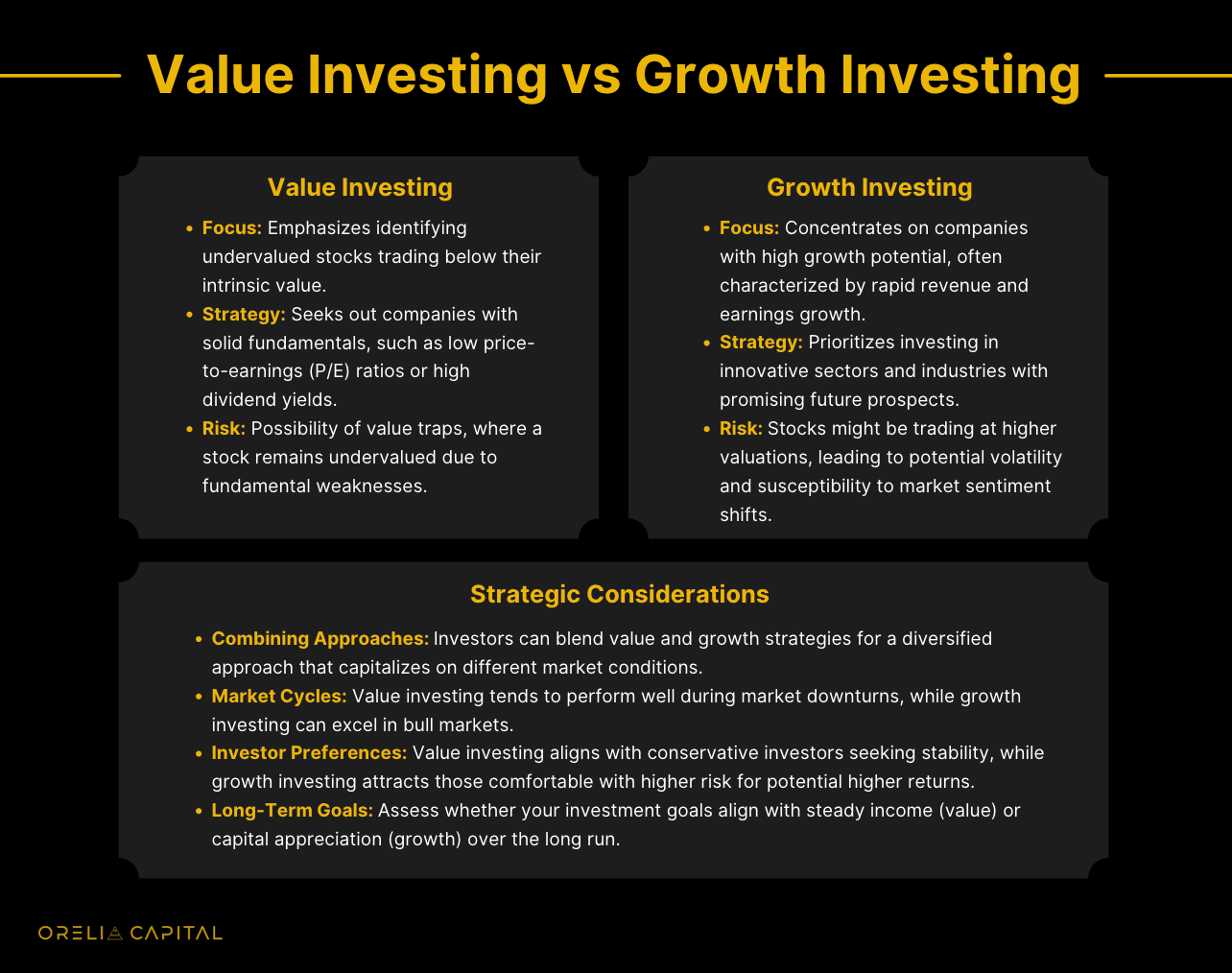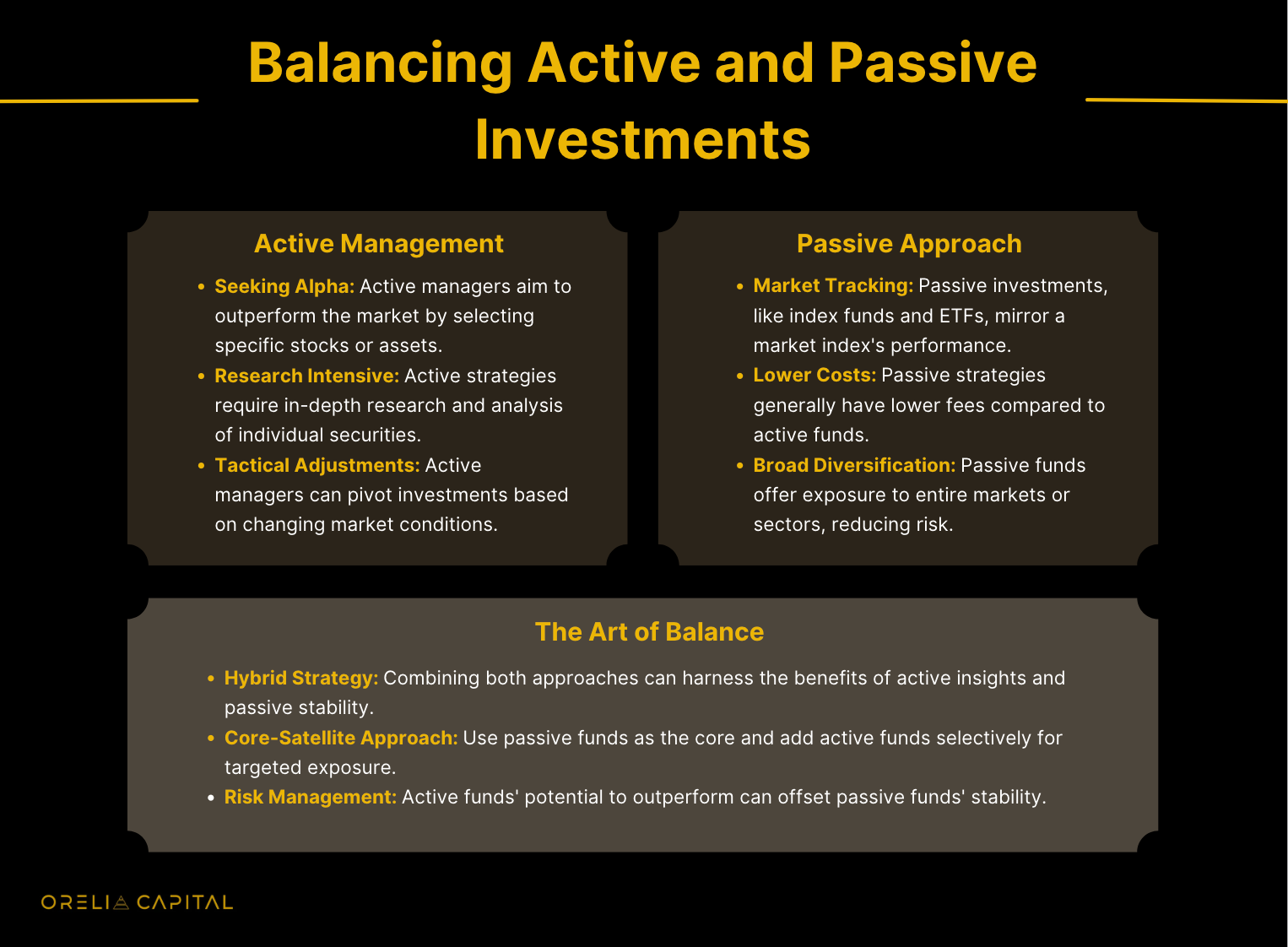Building an Investment Portfolio for Long-Term Growth

Creating a robust investment portfolio for long-term growth requires a strategic approach that embraces diversification, risk management, and a balanced mix of investment styles. Let's delve into the key strategies that can help you build a successful long-term growth portfolio:
Asset Allocation for Long-Term Growth:
Diversification Beyond Stocks:
- Include a mix of asset classes: Stocks, bonds, real estate, and alternative investments.
- Diversification reduces the impact of a single asset's poor performance on the overall portfolio.
Risk and Return Trade-off:
- Balance between risk and potential return by allocating assets across various categories.
- Bonds offer stability and income, while stocks provide growth potential.
Stability in Turbulent Times:
- When one asset class falters, others might excel, creating a buffer against losses.
- Example: In economic downturns, bonds can counterbalance stock market declines.
Review and Rebalance:
- Periodically review your portfolio's performance and alignment with goals.
- Rebalance: Adjust your asset allocation if market fluctuations have skewed your original plan.
Benefits of Alternatives:
- Alternative investments like real estate, commodities, or private equity can provide further diversification.
- They often have a low correlation with traditional assets, potentially enhancing risk-adjusted returns.
Avoid Market Timing:
- Asset allocation discourages trying to time the market.
- Staying invested consistently reduces the risk of missing out on market gains.
Expert Guidance:
- Consult financial advisors to fine-tune your asset allocation strategy.
- Advisors can help align your portfolio with your risk tolerance and financial objectives.
Risk Management and Portfolio Diversification:
Diversification Benefits:
- Spread Risk: Allocate investments across different sectors, industries, and asset classes to avoid overexposure to a single area.
- Reduced Volatility: Diversification smoothens portfolio performance as gains in some areas offset losses in others.
Sector and Industry Diversification:
- Varied Exposure: Invest in sectors that react differently to market conditions, such as technology, healthcare, and consumer goods.
- Hedge Against Cycles: Certain sectors perform better in specific economic cycles, minimizing losses during downturns.
Geographic Diversification:
- Global Reach: Invest across various countries and regions to avoid concentration risk in one market.
- Currency Hedge: Different economies and currencies can balance risks associated with currency fluctuations.
Correlation Analysis:
- Understanding Correlation: Assess how assets move in relation to each other; assets with low correlation can diversify risk effectively.
- Hedge Potential Losses: Investments with negative correlation can act as a buffer during market declines.

The Role of Dividend Stocks in Long-Term Portfolios:
Steady Income Generation: Dividend-paying stocks provide a consistent income stream, which can be especially beneficial for investors seeking regular cash flow alongside potential capital appreciation.
Risk Mitigation: Dividend payments can act as a buffer during market downturns, as they represent a portion of the company's earnings that is returned to shareholders regardless of market conditions.
Reinvestment Potential: Reinvesting dividends allows you to purchase additional shares at market prices, effectively compounding your investment over time.
Compounding Growth: Over the long term, reinvested dividends can significantly enhance the overall growth of your portfolio, harnessing the power of compounding.
Ideal for Income-Oriented Investors: Dividend stocks are particularly attractive to investors seeking passive income, such as retirees or those aiming for financial independence.
Managing Portfolios in Volatile Markets:
Navigating volatile markets requires a thoughtful approach to maintaining your long-term growth objectives. Here's a closer look at strategies for managing your investment portfolio during uncertain times:
Stay Calm and Informed:
- Avoid knee-jerk reactions: Emotional decisions can lead to suboptimal outcomes.
- Stay informed: Understand the underlying reasons for market volatility.
Diversification Matters:
- Spread risk: Diversify across different asset classes, sectors, and geographies.
- Defensive holdings: Include assets that historically perform well during market downturns, including defensive stocks, bonds and gold to hedge against volatility.
Cash Reserves for Opportunities:
- Maintain cash reserves: Keep a portion of your portfolio in cash to capitalize on buying opportunities.
Stick to the Plan:
- Long-term perspective: Remember your original investment goals and time horizon.
Leverage Dollar-Cost Averaging (DCA):
- Systematic investments: Invest a fixed amount at regular intervals.
- Reduce timing risk: DCA helps mitigate the impact of market volatility on your entry points.
Professional Advice:
- Financial advisor consultation: Seek guidance from professionals during uncertain times.
Opportunistic Mindset:
- Focus on quality: Identify high-quality assets that have been unduly affected by market sentiment.
Investing in Technology and Innovation:
Tech as a Growth Engine:
- Explore companies driving technological advancements across sectors.
- Identify innovative disruptors with potential for exponential growth.
Diverse Tech Subsectors:
- Consider AI, cloud computing, biotech, renewable energy, and more.
- Allocate across subsectors to harness various growth opportunities.
Research and Due Diligence:
- Investigate companies' R&D efforts and patents for innovation strength.
- Examine competitive positioning and partnerships for growth potential.
Balancing Risk and Reward:
- Acknowledge higher volatility in tech stocks due to rapid changes.
- Diversify with non-tech holdings to manage portfolio risk.

Constructing a portfolio with these strategies in mind can set you on a path to achieve consistent long-term growth. Remember, it's not about "Timing the Market" but the "Time In the Market" that matters.
Happy Investing!

We hope you enjoyed this edition of our newsletter. If you found it helpful, please consider sharing it with others who might benefit from this information.
At Orelia Capital, we believe that feedback is a gift. Your feedback can help us improve our content and provide more value to our readers.





